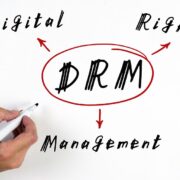
In the ongoing battle against digital piracy, understanding the psychology of a pirate becomes essential for devising effective strategies. This article explores the behavioral challenges posed by digital pirates and how Digital Rights Management (DRM) serves as a pivotal tool in mitigating these challenges, safeguarding content creators and distributors from the complex motivations that drive unauthorized access and distribution.
Introduction:
As digital content faces relentless piracy threats, comprehending the psychology of a pirate is crucial. This article delves into the behavioral challenges posed by digital pirates and examines how Digital Rights Management (DRM video protection) acts as a strategic countermeasure. By understanding the motivations and tactics of pirates, DRM becomes a formidable ally in preserving the integrity of digital assets.
- Motivations Behind Piracy: Unraveling the Mindset:
To counteract digital piracy effectively, one must first unravel the motivations that drive individuals to engage in unauthorized access and distribution. These motivations can range from a desire for free content to ideological opposition to copyright laws. DRM, with its multifaceted approach, addresses these motivations by creating barriers and consequences for potential pirates.
- Accessibility vs. Piracy: Finding the Right Balance:
The psychology of a pirate often revolves around the perceived trade-off between content accessibility and the cost associated with legitimate access. DRM navigates this challenge by offering a middle ground – allowing legitimate users seamless access while introducing barriers for unauthorized access. Striking this balance is crucial in addressing the behavioral dynamics of piracy.
- Deterrence through Encryption: Creating Psychological Barriers:
One of the primary roles of DRM is to create psychological barriers through encryption. Pirates are deterred by the challenge of bypassing encryption, which adds a layer of complexity to unauthorized access attempts. This deterrence, rooted in the psychology of a pirate, discourages casual infringement and redirects efforts towards legitimate means of access.
- Fear of Consequences: Shaping Behavioral Patterns:
DRM introduces a fear of consequences into the psychology of a pirate. Knowing that unauthorized access can lead to legal repercussions or loss of privileges acts as a deterrent. This fear of consequences, when integrated into DRM strategies, plays a pivotal role in shaping behavioral patterns, dissuading potential infringers.
- Behavioral Analytics: Identifying Patterns and Anomalies:
Understanding the psychology of a pirate involves identifying patterns and anomalies in user behavior. DRM incorporates behavioral analytics to distinguish between legitimate users and potential infringers. By analyzing access patterns, DRM can adapt its strategies, providing insights into the evolving tactics of pirates and enhancing the overall effectiveness of content protection.
- Continuous Updates: Staying Ahead in the Cat-and-Mouse Game:
The psychology of a pirate is dynamic, and tactics evolve over time. DRM addresses this challenge by facilitating continuous updates to its strategies. By staying ahead in the cat-and-mouse game, DRM ensures that behavioral challenges posed by pirates are met with adaptive and proactive measures, maintaining the integrity of digital content.
- User Education: Shaping Ethical Digital Practices:
DRM extends its influence beyond technical measures to user education. By shaping ethical digital practices, DRM contributes to altering the mindset of potential pirates. Education about the consequences of piracy and the value of supporting content creators fosters a culture that respects intellectual property, influencing the psychology of users in the digital ecosystem.
Conclusion:
In the intricate landscape of digital piracy, understanding the psychology of a pirate is paramount. DRM, with its blend of technical barriers, consequences, behavioral analytics, continuous updates, and user education, becomes a comprehensive strategy for overcoming behavioral challenges. By addressing the motivations and tactics that drive unauthorized access and distribution, DRM emerges as a powerful ally in preserving the integrity of digital assets and fostering a culture of ethical digital practices.












